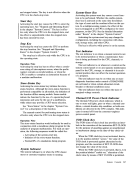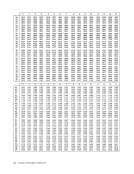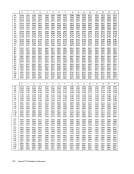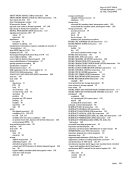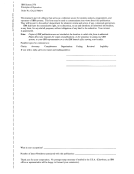R
Field Reg. Number Control Registersr----- 32 r----- 32 Bits I ........ ----64 Bits 0000 0 0001 0010 2 0011 3 0100 4 0101 5 0110 6 0111 7 1000 8 1001 9 1010 10 1011 11 1100 12 1101 13 1110 14
1111 15
Note: The braces indicate that the two registers may be coupled as a double-register
pair, designated by the R
field of the lower-numbered register. For example, the
general register pair0 and 1 is designated by the R
field of registerO. General, Floating-Point, and Control Registers
Input and Output
Input/output(I/O) operations involve the transfer
of information between main storage and anI/O device. I/O devices attach to channels, which con
trol the transfer of data between the devices and
main storage.
Channels
The channel connects with theCPU and main stor
age and, usually by means of theI/O interface, with
control units. The channel relieves theCPU of the
burden of communicating directly withI/O devices
and permits data processing to proceed concurrently
withI/O operations.
A channel may be an independent unit, complete
with necessary logical and storage capabilities, or it
may time-shareCPU facilities and be physically
integrated with theCPU. In either case, channel
functions are identical. Channels may be implement
ed, however, to have different maximum data
transfer capabilities.System/370 has three types of channels: byte
multiplexer, block-multiplexer, and selector chan
nels.
Input/Output Interface
For most devices, communication between the con
trol unit and the channel takes place over a connec
tion called theI/O interface. The I/O interface System Organization 17
Field Reg. Number Control Registers
1111 15
Note: The braces indicate that the two registers may be coupled as a double-register
pair, designated by the R
field of the lower-numbered register. For example, the
general register pair
field of register
Input and Output
Input/output
of information between main storage and an
trol the transfer of data between the devices and
main storage.
Channels
The channel connects with the
age and, usually by means of the
control units. The channel relieves the
burden of communicating directly with
and permits data processing to proceed concurrently
with
A channel may be an independent unit, complete
with necessary logical and storage capabilities, or it
may time-share
integrated with the
functions are identical. Channels may be implement
ed, however, to have different maximum data
transfer capabilities.
multiplexer, block-multiplexer, and selector chan
nels.
Input/Output Interface
For most devices, communication between the con
trol unit and the channel takes place over a connec
tion called the
























































































































































































































































